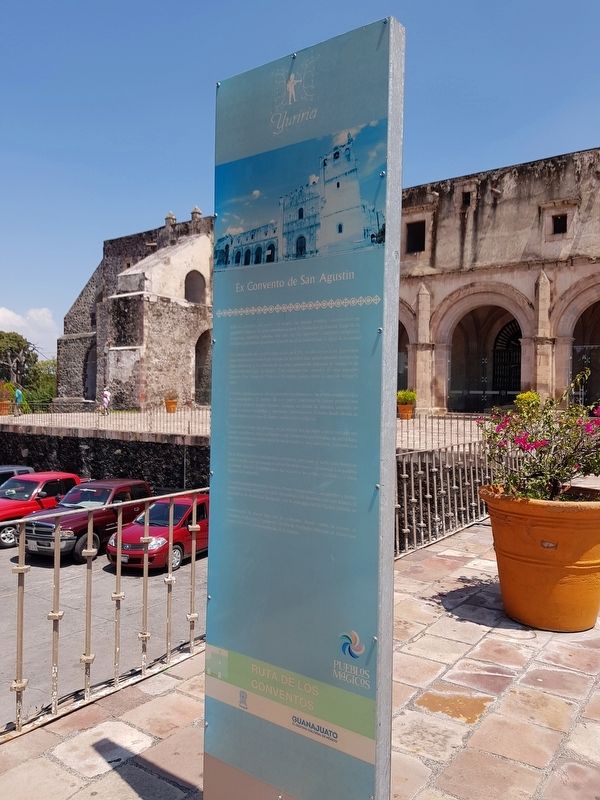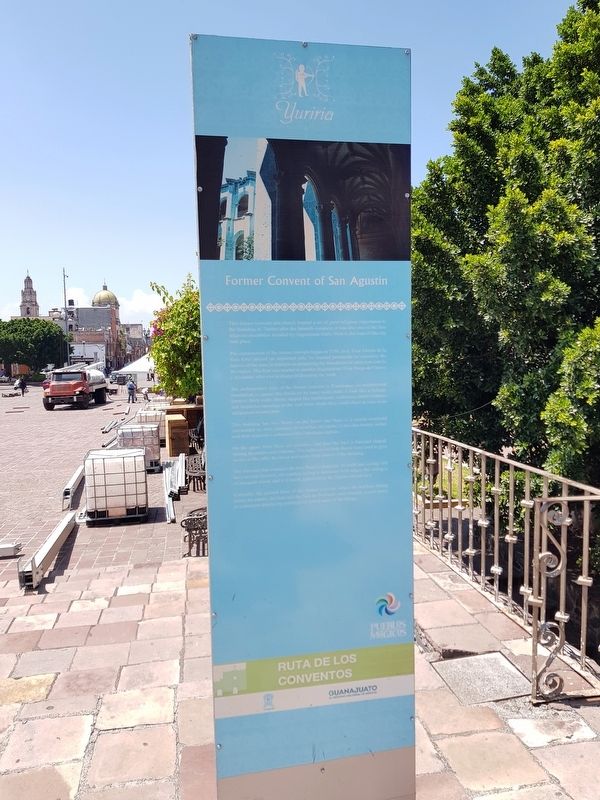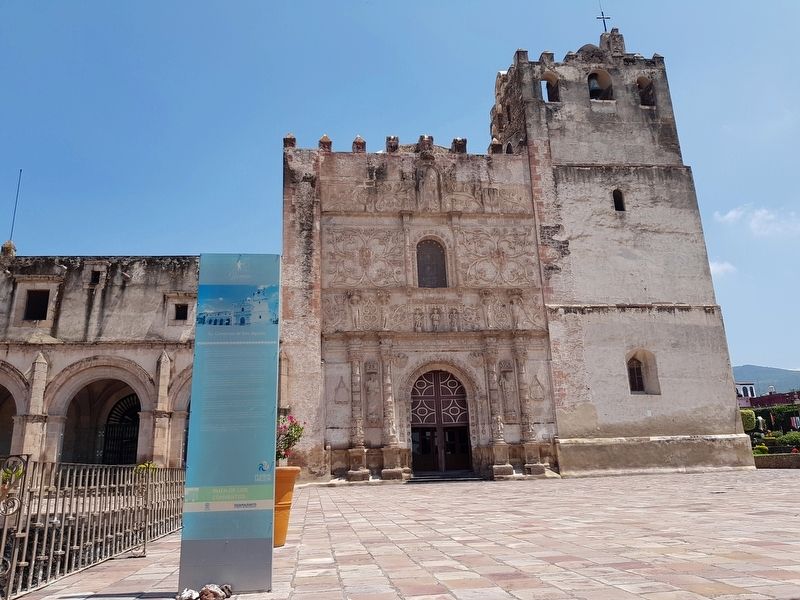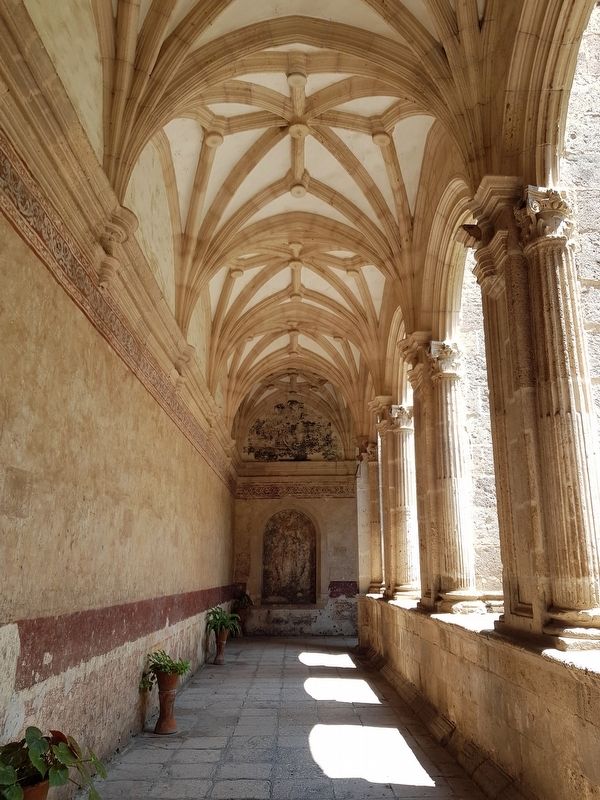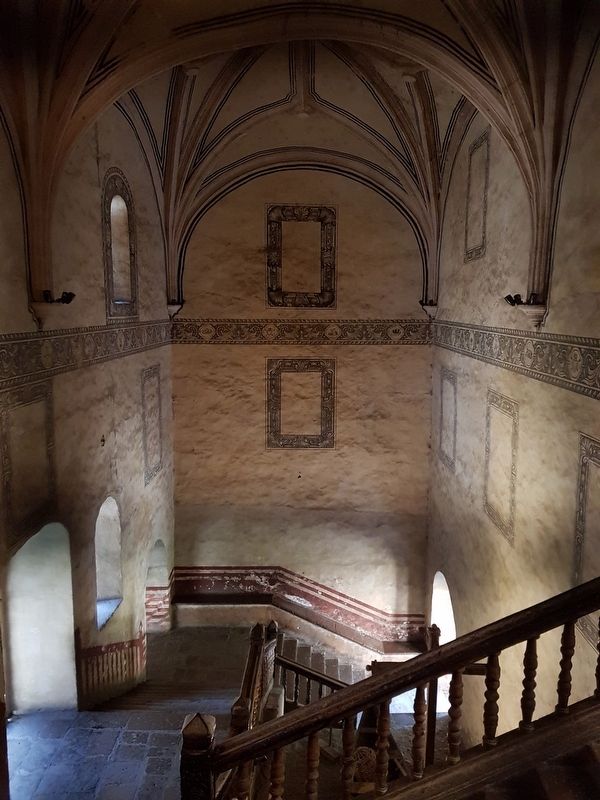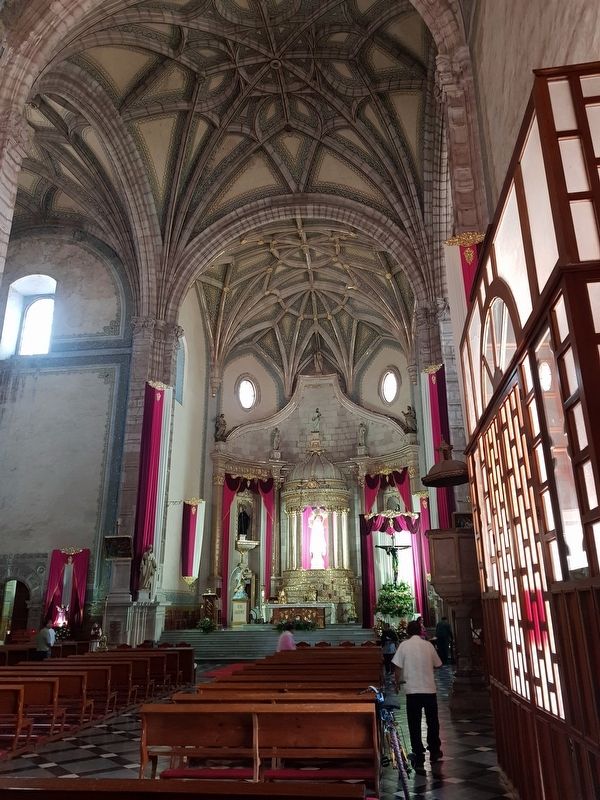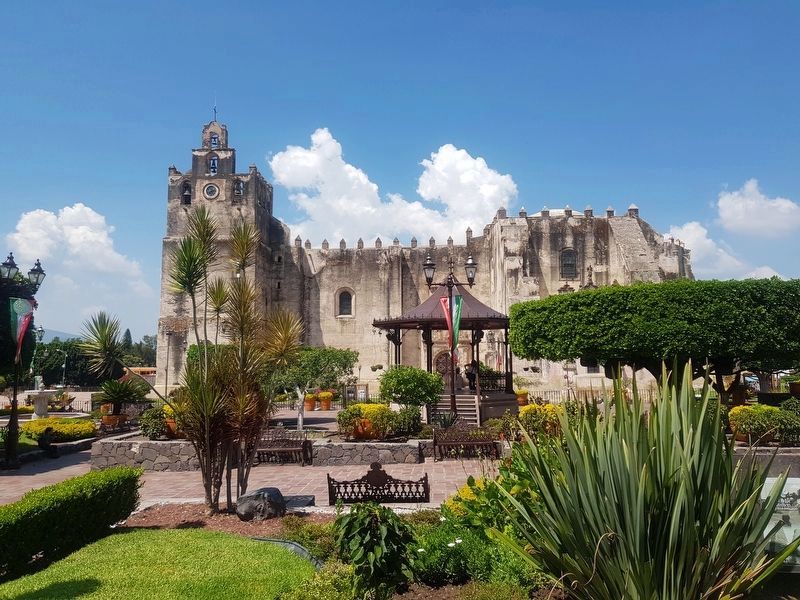Yuriria, Guanajuato, Mexico — The Central Highlands (North America)
Former Convent of San Agustín
Ruta de los Conventos - The Convent Route
Este ex convento, así como y el templo del mismo nombre, conformaron un conjunto religioso de gran importancia para la fundacion de Yuriria, luego de la conquista española, además fue una de los primeros conjuntos religiosos fundados por frailes agustinos; a partir de él se realizó toda la traza de la ciudad.
La construcción del ex convento inició en 1550, en ella tuvieron un importante papel personajes como Fray Alonso de la Vera Cruz, quien aprendió purépecha para catequizar a los nativos de la zona, además de impulsar la fundación de otros conventos en la región. Este religioso fue maestro de otro agustino llamado Fray Diego de Chávez y Alvarado, quien estuvo a cargo de dirigir la obra.
El estilo arquitectónico del ex convento es plateresco, su planta arquitectónica es cuadrangular. El remate de sus muros exteriores la hacen parecer una fortaleza militar: muros espesos, remates en forma de almena, caminos de ronda, ventanas pequeñas y aspilleras - aberturas en el muro desde donde se podía disparar, en caso de alguna insurrección indígena.
Este edificio tiene dos plantas, en la inferior hay un patio central rodeado por cuatro comedores, cuya techumbre está compuesta por bóvedas de nervadura; además cuenta con veinte arcos de medio punto y sus respectivas columnas con capiteles conrintios.
En la planta superior también hay corredores, pero aquí el techo tiene forma de cañón corrido, que descansan en arcos de medio punto y columnas. Los pasillos de ambas plantas se usaban para dar acceso a las celdas, vestíbulo y a otros lugares del inmueble.
La escalera que comunica a las dos plantas es majestuosa, sus paredes y techos conservan varios frescos, el techo abovedado está decorado con nervaduras, el barandal es de madera de mezquite, vale la pena apreciar las figuras talladas en este.
Actualmente, la planta baja del ex convento, donde estaba la cocina, el comedor, la albacena, el granero y la Sala de Profundis, albergan un museo que expone pinturas y diversas piezas de la liturgia.
Former Convent of San Agustín
This former convent and church formed a set of great religious importance to the founding of Yuriria after the Spanish conquest, it was also one of the first religious assemblies founded by Augustinian friars; from it, the trace of the city took place.
The construction of the former convent began in 1550, in it, Friar Alonso de la Vera Cruz played an important
role, he learned purépecha to catechize the natives of the area, in addition to promoting the foundation of other convents
in the region. The friar was teacher to another Augustinian: Friar Diego de Chávez y Alvarado, who was in charge of directing the work.
The architectural style of the former convent is Plateresque: its architectural foundation is square, the finials of its outer walls make it look like a military fortress: thick walls, finials shaped like battlements, walkways, small windows and loopholes – openings in the wall from where they could shoot in case of an indigenous insurrection.
This building has two floors, on the lower one there is a central courtyard surrounded by four corridors, its roof has rib vaults, it also has twenty arches and their respective columns with Corinthian capitals.
On the upper floor there are corridors, but here the roof is barreled shaped, resting on arches and columns. The hallways on both floors were used to give access to the cells, the foyer and some other places of the building.
The staircase that connects the two floors is majestic, its walls and ceilings have several frescoes, the vaulted ceiling is decorated with ridges, the railing is made of mesquite wood, and it is worth appreciating the figures carved on it.
Currently, the ground floor of the former convent, where the kitchen, dining room, the pantry, the barn and the Sala de Profundis were located, are home to a museum displaying paintings of varied parts of the liturgy.
Topics. This historical marker is listed in these topic lists: Architecture • Churches & Religion • Colonial Era • Man-Made Features. A significant historical year for this entry is 1550.
Location. Marker has been reported permanently removed. It was located near 20° 12.82′ N, 101° 7.909′ W. Marker was in Yuriria, Guanajuato. Marker was on Carretera Salvatierra-Yuriria (Route 51) just east of Villa Fuerte, on the left when traveling east. Touch for map. Marker was in this post office area: Yuriria GTO 38940, Mexico.
We have been informed that this sign or monument is no longer there and will not be replaced. This page is an archival view of what was.
Other nearby markers. At least 8 other markers are within walking distance of this location. Ex Convento de San Pablo; Founded by Agustinians (here, next to this marker); Convent of Saint Augustine of Yuriria (within shouting distance of this marker); Monument to Friar Diego de Chávez (within shouting distance of this marker); General José María Magaña (about 90 meters away, measured in a direct line); Miguel Hidalgo in Yuriria
(about 120 meters away); Presidencia Municipal / Palacio Municipal / City Hall Town (about 120 meters away); Yuriria Named a City (about 120 meters away); Joaquín López Arias (about 150 meters away). Touch for a list and map of all markers in Yuriria.
Regarding Former Convent of San Agustín. This marker was replaced by a marker titled "Ex Convento de San Pablo;
Founded by Agustinians."
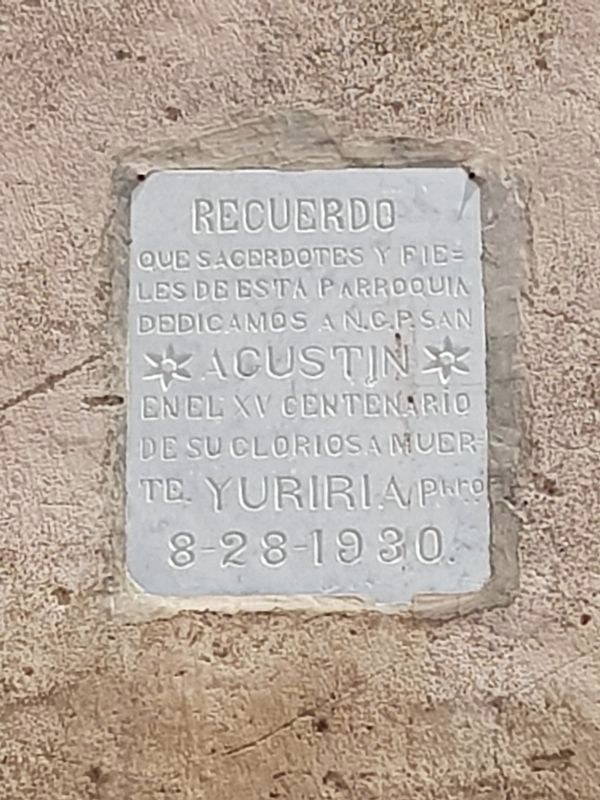
Photographed By J. Makali Bruton, September 21, 2019
8. A marker on the death of Saint Augustine in 430 CE on the Former Convent of San Agustín
This marker, placed in 1930, is to the right of the main entryway to the former convent's temple and recalls the death of Saint Augustine some 15 centuries earlier. It reads:
Recuerdo que sacerdotes y fieles de esta parroquia dedicamos a N.G.P. San Agustín en el XV centenario de su gloriosa muerte. Yuriria Pbro 8-28-1930.
Credits. This page was last revised on June 9, 2022. It was originally submitted on November 1, 2019, by J. Makali Bruton of Accra, Ghana. This page has been viewed 160 times since then and 19 times this year. Photos: 1, 2, 3, 4, 5, 6, 7, 8. submitted on November 1, 2019, by J. Makali Bruton of Accra, Ghana.
